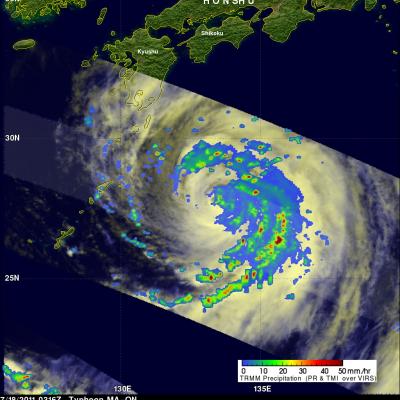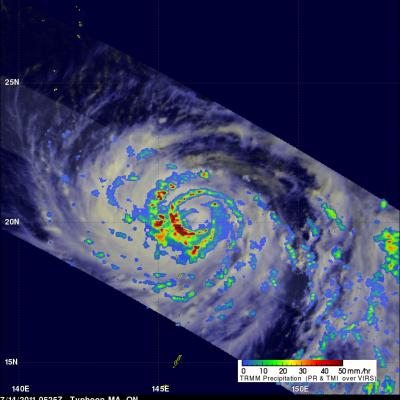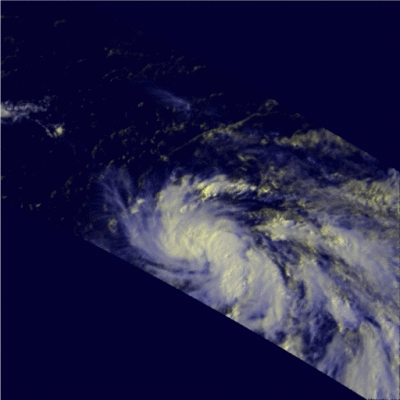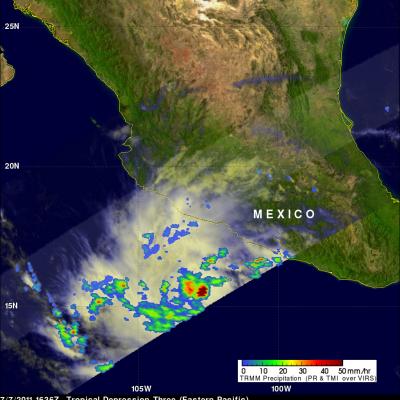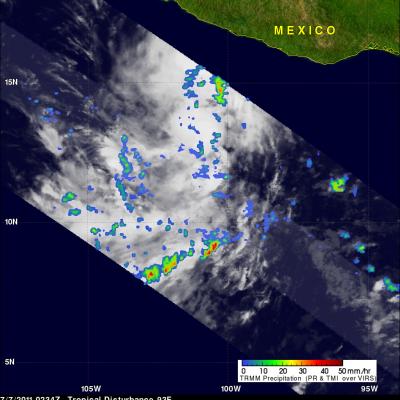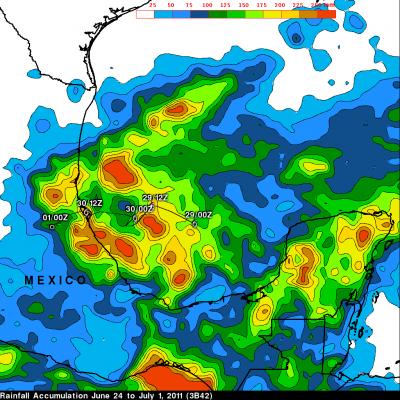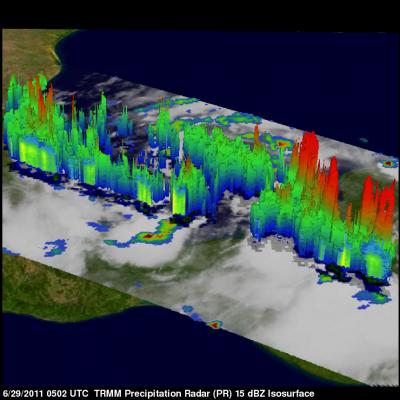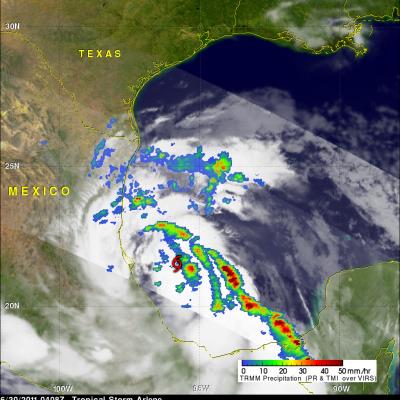Typhoon MA-ON Threatening Japan
Typhoon MA-ON was a category 2 typhoon on the Saffir/Simpson scale with wind speeds of about 85 kts (~98 mph) when the TRMM satellite captured those data shown above on 18 July 2011 at 0316 UTC. MA-ON had weakened considerably from a very powerful category four typhoon with wind speeds of 115 kts (~132 mph) on 15 July 2011. TRMM's Microwave Imager (TMI) and Precipitation Radar (PR) data were used to produce the rainfall analysis shown above. This TRMM analysis shows that MA-ON still contained organized bands of very intense rainfall with the most intense precipitation located in the eastern


